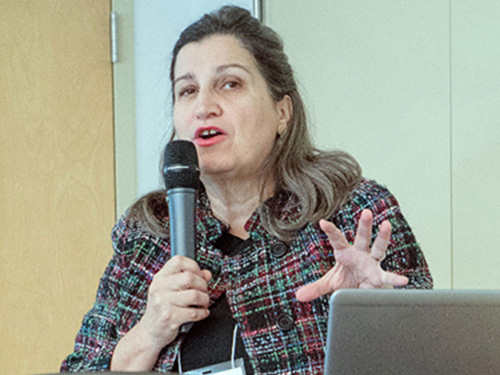Twenty-five people have helped show us the most far-reaching virtuous changes that took place in Latin America in the last quarter century. They showed us that the region is not irredeemably condemned to grow at rates of 2% less than the average of the emerging world. Condemned to be less productive. Condemned to be unequal. Condemned to be the place with the least respect for human life on the planet. Condemned to have the most unstable and weak rules and institutions. They showed it was posible to advance without leaving social groups behind, without losing years, valuable resources, or, worse, human lives in the process.
It was people who brought about, facilitated, or led many of these transcendental changes. Not political parties or multitudes. Individuals. People like Mauricio Tolmasquim, José Márcio Camargo, Elsa Carbonell, and Gastón Acurio. They were able to make themselves heard by slow and bureaucratic governments, or they converted abstract ideas and plans into actions and results.
Others, like Rodrigo Galindo and Antônio Seabra, understood the enormous importance of including parts of society that were being left behind, and of the sustainable use of natural resources. They stopped repeating tired slogans and instead created budgets, goals, and results for tasks that would create a source of wealth for all.
Pedro Heilbron, Enrique Cueto, and Marcos Galperin made economic integration a reality. They didn’t sit around hoping that governments would exchange diplomatic notes, approve treaties, or build bridges and roads to move goods, people, and ideas in the Americas. Alberto Alemán and the China Development Bank integrated us by building infrastructure, and Sergio Moro, with investigations on corruption that now are showing results respect to governments and companies in 14 countries, perhaps opened ways to show us how new highways do not have to be paved with bribes.
Private companies proved to be the most powerful tools for transforming the region. While the real GDP of Latin American and the Caribbean has been growing at an average rate of 2.7% per year since 1994, the real combined sales of Bimbo, Falabella, Embraer, Orbia, and AB InBev were growing by 12.5% per year. It’s easy to imagine what would happen to formal employment, managerial skills, and the advancement of knowledge if there were more companies like them. Within those areas, Óscar Salazar and Brian Acton used technology to resolve social problems of mobility and communication. After them came, and will come, many more who will modernize commerce, payments, health, and agribusinesses.
At the same time, McKinsey was bringing ideas from the first world to local businessmen to redesign their businesses when protectionism disappeared in the 1990s, and when the digital revolution arrived in the 2000s.
Jaime Lerner showed that it’s the cities, and not the national states, that are the social innovators par excellence. At the same time, Ángel Gurría recommended practices to enable national governments to progress at the same rate as companies and cities.
Lastly, Ruth Shady added almost 2,000 years to the American calendar of civilization with her discovery of Caral, and Nobel Prize winner Mario Molina, precursor of one of the first concerted environmental revolutions in history, will maintain the human species on the face of the planet for thousands of years to come.
The examples are there for us to understand and repeat. With people like this, the future can be different.



